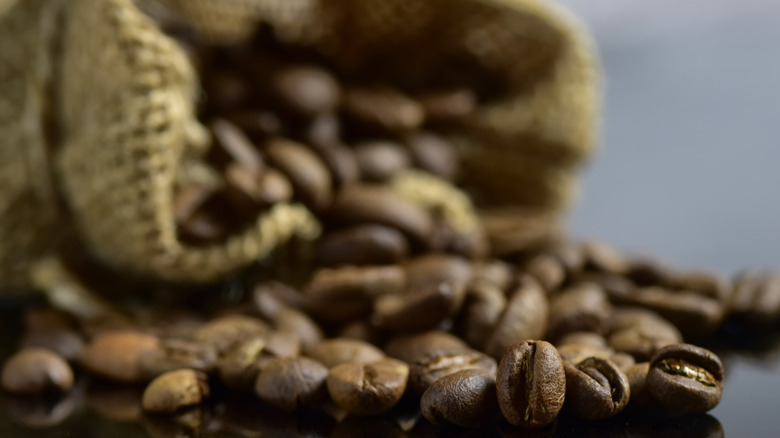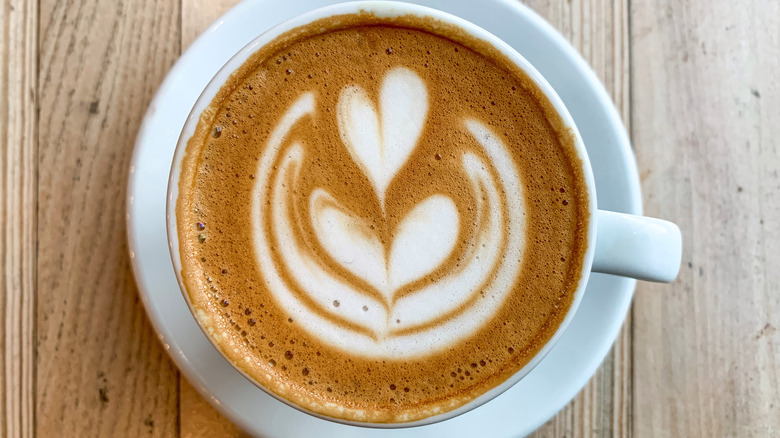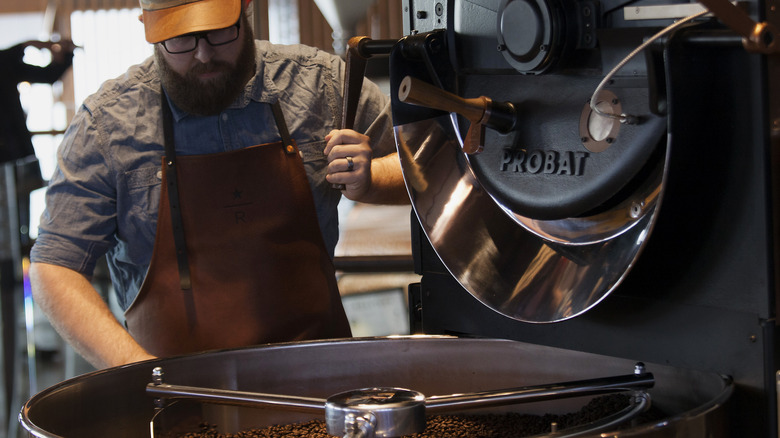The Reason Peaberry Coffee Beans Are So Divisive
The luxury side of coffee has found its poster child in peaberry coffee. These slightly rounded coffee beans grow on the same plant as regular coffee, but only roughly one in 15 coffee beans qualifies as peaberry. No, it's not a new variety of coffee. It's a little-understood mutation that makes the coffee cherry produce only one seed instead of two. From the outside of the fruit, there's no discernible difference. It's only once you process the coffee cherries and look inside that you can see whether it has one or two seeds. You roast and brew peaberries more or less the same as regular coffee beans. The only difference is that because they are marginally smaller, they will roast slightly faster.
Peaberries are about as divisive as coffee beans can get. Coffee-heads often feel strongly over whether peaberries are worth the hype, and the significant extra cost: Peaberries can be as much as $15 more per pound. Scientific research is somewhat scarce for many of the claims made in favor of peaberry coffee, making it more a matter of personal preference for the time being.
The case for peaberry coffee
People who think peaberry coffee is worth the extra price are in it for the flavor. There's really no other reason to prefer it over regular coffee. Fans of peaberry coffee beans claim that they produce a cup that's brighter, sweeter, and more flavorful. Some of them will do blind coffee tastings between regular and peaberry coffee to remove any bias and prove that they prefer the peaberry more.
If coffee is your hobby, paying that extra premium for a bag of beans that is above and beyond might seem worth it. And for many, it is: Those who lean towards drinking peaberry coffee aren't going to be your quick-cup-of-Folgers-in-the-morning type of people. No, these are people who are deeply interested in the craft behind the cup. They're looking for an elevated experience and, to them, peaberry delivers on that promise. Whether they're right or not is subjective.
Peaberry naysayers
At least as many people are on the other side of the aisle. To them, peaberry tastes the exact same as regular coffee, and the hype around peaberry blends is pure marketing. After all, the farmers don't need to do anything differently. These coffee beans grow like this all on their own. The extra cost comes from having to sort out the peaberries from the regular seeds. This can be incredibly time-consuming if done by hand, which, to people who aren't as in love with peaberries, seems like a waste of time and effort.
Some naysayers argue that peaberries are the product of a defect in the growing process – and therefore may not be as good as regular flatter coffee beans. But what does seem to make sense is that the same factors will affect the taste of peaberries as affect regular beans. These are the conditions in which they're grown.
Even if some peaberries, grown in good conditions, do have a slight edge over regular coffee beans, that edge can all go away if they aren't roasted correctly or brewed right. Which is to say that all of that time and energy spent picking out the perfect bean could be spent perfecting your roast. The coffee wouldn't need to be so expensive and we'd still get a great cup in the end. Whichever side you land on, at the very least, peaberries are a fascinating, if divisive, talking point throughout the coffee world.


